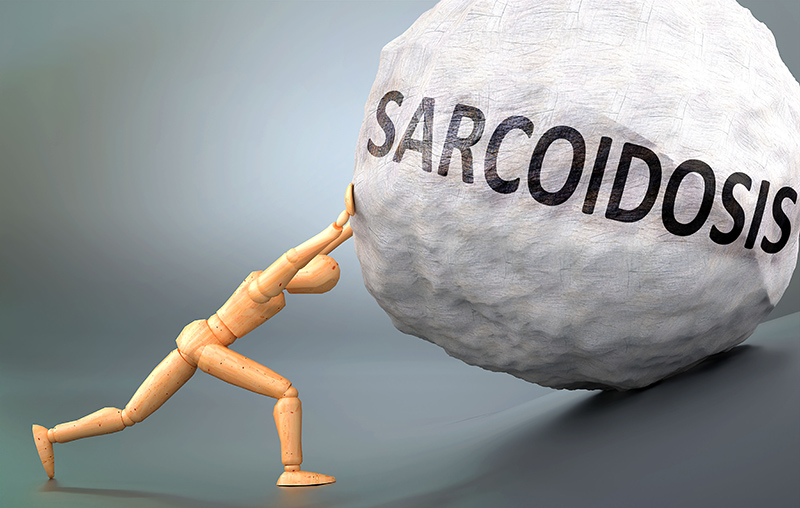Sarcoidosis, otherwise known as the Besnier-Boeck disease, is an autoimmune and systemic inflammatory disorder that typically affects one or more organs, although most commonly lungs and lymph nodes. Inflammation could potentially affect the structure and normal function of the affected organ(s).
Granulomas and Other Data
Typically, the inflammation leads to the appearance of lumps known as granulomas in the affected organs, precisely the ones that impact organ structure and function. The onset, causes and progress of the sarcoidosis are, as of today, still unknown and uncertain, but here is what we do know.
- Symptoms may appear suddenly (which normally leads to the milder development of the condition: short and mildly severe), although they normally progress gradually.
- It has been observed fundamentally in adults 20 to 40 years old.
- It affects all manner of people and ethnic groups. However, filtering for purposes of this article, in Caucasians the condition appears suddenly, is usually milder in form and is short lived. African-Americans and Puerto Ricans tend to develop the more severe and protracted disease form, normally affecting both their lungs. Which is also an occurrence in Scandinavians. Lung-linked complaints include persistent dry cough, shortness of beath and fatigue. African-Americans have 4 to 17 greater chance to develop the disease compared to Caucasians.
- Condition development is variable, spanning the entire arc, from asymptomatic to chronic to cause of death.
- Although it is not genetic per se, the presence of sarcoidosis in a first- or second-degree relative increase your chance of developing it almost five-fold.
Diagnostics, Healing and Cures
The good news is that in 95% of the cases ever observed, acute sarcoidosis self-heals without treatment in 4 to 6 weeks.
For chronic sarcoidosis, most cases are cured with a one-off cortisone treatment, with corticosteroids being the usual treatment across the board.
Pulmonary sarcoidosis is normally diagnosed is thorax imaging. However, complementary granuloma biopsy, blood work biochemistry, computerized tomography are quite normal too, once the initial imaging has determined the presence of inflamed lymphatic tissue.
Secondary pharmacology includes Azathioprine, Cyclophosphamide, Chloroquine, Hydroxychloroquine, and Methotrexate.
Almost all medicine administered against Sarcoidosis are immunomodulators, meaning they control the reactions of the immune system, and cytostatic, meaning they halt cell proliferation.
Diagnostics, Healing and Cures
A self-reporting questionnaire that led to the conclusions of Robert P Baughman et al established that the overall rate of COVID-19 infection in sarcoidosis patients, especially those on immunosuppressive medication, was 2.23%, which strongly suggests an increased rate of infection. Especially high were pulmonary sarcoidosis, with a rate of infection of 2.48%, and neurosarcoidosis.
Sources:
https://my.clevelandclinic.org/health/diseases/11863-sarcoidosis-overview
https://www.fesemi.org/informacion-pacientes/conozca-mejor-su-enfermedad/sarcoidosis
https://pubmed.ncbi.nlm.nih.gov/33597796/


